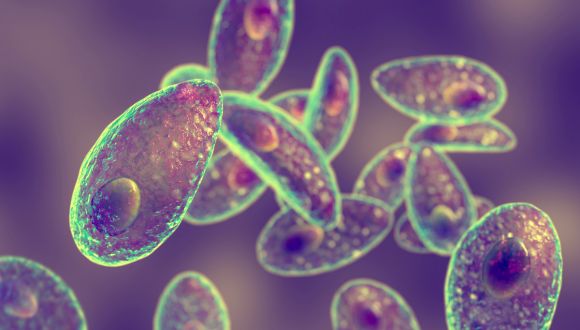
How a Brain Parasite Becomes a Brain Cure
TAU research paves the way to brain healing with parasites
Have you ever imagined that parasites could be beneficial for brain diseases? TAU Researchers have reengineered Toxoplasma gondii, the ‘cat parasite,’ transforming it from a feared threat into a groundbreaking tool for delivering drugs directly to the brain. This surprising innovation not only overturns our expectations but also opens new possibilities for treating neurological disorders.
In a breakthrough study by an international team of scientists led by researchers from Tel Aviv and Glasgow Universities, the ‘cat parasite’ Toxoplasma gondii was engineered to deliver drugs to the human brain. The study was led by Prof. Oded Rechavi from the Department of Neurobiology and the Sagol School of Neuroscience at Tel Aviv University, together with his PhD student Dr. Shahar Bracha, and with Prof. Lilach Sheiner, an Israeli scientist and toxoplasma expert from the University of Glasgow in Scotland. The results were published in the leading scientific journal Nature Microbiology.
“One of the biggest challenges in treating neurological diseases is getting through the blood-brain barrier (BBB),” explains Prof. Rechavi. “It is tough to deliver drugs to the brain via the bloodstream, and this is especially true for large molecules such as proteins, the critical ‘machines’ that carry out many important functions inside the cell”.

Toxoplasma gondii – the ‘cat parasite’
The creative solution proposed by the TAU team utilizes the unicellular parasite Toxoplasma gondii, which can infect a vast variety of organisms, but reproduces only in the guts of cats. The parasite is very effective in infecting humans, with an estimated third of the global population infected at some point in their lives. Prof. Rechavi explains: “Most people don’t even feel the infection or only experience mild flu-like symptoms.
Dormant Parasite Sparks New Treatment
The parasite is, however, dangerous for people with immune failure due to conditions like AIDS, and for fetuses whose immune system has not yet developed. This is why pregnant women are advised not to eat raw meat which might contain the parasite, and to stay away from cats, which might deliver it through their feces. While ridding the body of the parasite, a healthy immune system has only limited access to the brain, and the parasite remains in the brain throughout the carrier’s lifetime”.
The parasite’s ability to penetrate the human brain and survive there in a dormant state, without reproducing, made it a perfect candidate for the researchers’ novel approach: genetically engineering Toxoplasma gondii to secrete therapeutic proteins.
Can Parasites Deliver Medications to the Brain?
“The parasite has three distinct secretion systems and we ‘hitched a ride’ on two of them”, says Prof. Rechavi. “We did not intervene with the first system, which secretes proteins outside the neurons. The second system ‘shoots’ a ‘harpoon’ into the neuron, to enable penetration. Once inside, the parasite forms a kind of cyst that continues to secrete proteins permanently. We engineered the parasite’s DNA to make it produce and secrete the proteins we want, which have therapeutic potential”.
“The parasite’s ability to pass through the BBB and communicate with the neurons, combined with our ability to engineer the parasite, generate a golden opportunity for solving the great therapeutic challenge of delivering medications to the brain”, says Prof. Sheiner.

Illustration of the activity of neurons
In this study, the team used transgenic model animals that were injected with parasites genetically engineered to produce and secrete proteins that travel into cell nuclei. Several lines of evidence proved that the proteins had been delivered to the target area and remained active in the neurons’ nuclei. One of these was especially eye-catching: a protein that, delivered by the parasite, entered the nuclei and cut out specific DNA segments, causing the transgenic animals’ brains to glow in the dark.
New Method for Rett Syndrome
This breakthrough can have far-reaching implications for a series of severe diseases. In the present study, the researchers specifically demonstrated the delivery of a protein called MeCP2, whose deficiency is associated with Rett syndrome. “This is a deadly syndrome caused by a deficiency in a single gene called MePC2 in brain cells, and our engineered Toxoplasma gondii was able to deliver it to the target cells”, says Prof. Rechavi. “But this is just one example. There are many other diseases caused by deficiency or abnormal expression of a certain protein”. To ensure the method’s safe and effective therapeutic implementation, for both drug delivery and genetic editing, a company named Epeius was established in collaboration with Ramot – the technology transfer company of Tel Aviv University, and with the University of Glasgow’s research and innovation services.
